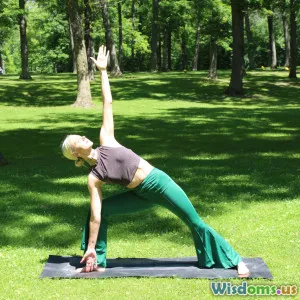
The Benefits of Exercise for Older Adults
6 min read Explore how exercise enhances health and well-being in older adults, promoting longevity, mobility, and mental health. (0 Reviews)
The Benefits of Exercise for Older Adults
As we age, maintaining our health and well-being becomes increasingly vital. One of the most effective ways to achieve this is through regular exercise. Not only does physical activity enhance physical fitness, but it also significantly contributes to mental health, social engagement, and overall quality of life. In this article, we delve into the various benefits of exercise specifically for older adults, backed by scientific research and expert opinions.
1. Physical Health Benefits
1.1 Improved Cardiovascular Health
Engaging in regular aerobic exercises, such as walking, swimming, or cycling, can lead to better heart health. Studies have shown that older adults who exercise regularly have a lower risk of heart disease, hypertension, and stroke. The American Heart Association recommends at least 150 minutes of moderate-intensity aerobic activity weekly for older adults.
1.2 Enhanced Strength and Flexibility
Strength training is essential for older adults to combat age-related muscle loss, known as sarcopenia. Exercises that focus on resistance training can help improve muscle strength, maintain bone density, and enhance overall mobility. Moreover, flexibility exercises, such as yoga or tai chi, can improve balance, reducing the risk of falls—a significant concern for the elderly.
1.3 Weight Management
Regular physical activity plays a crucial role in maintaining a healthy weight. For older adults, weight management is vital as it can prevent various health issues, including diabetes and joint pain. Engaging in both aerobic and strength training exercises can facilitate weight loss and maintenance, supporting overall health.
2. Mental Health Benefits
2.1 Reduced Risk of Cognitive Decline
Research suggests that physical activity can positively influence brain health, reducing the risk of cognitive decline and conditions such as Alzheimer’s disease. Exercise increases blood flow to the brain, promoting the growth of new brain cells and enhancing cognitive function.
2.2 Alleviated Symptoms of Depression and Anxiety
Exercise is known to release endorphins, often referred to as the “feel-good” hormones. Regular physical activity can alleviate symptoms of depression and anxiety, providing a natural and effective way to improve mood and mental well-being.
3. Social Benefits
3.1 Increased Social Interaction
Participating in group exercise classes or sports can foster social connections. Engaging with others not only enhances motivation but also combats feelings of loneliness and isolation, which are common among older adults. Building a supportive community through exercise can enhance emotional health.
3.2 Boosted Self-Esteem
Regular exercise can lead to improved physical appearance and fitness levels, which can significantly boost self-esteem and confidence. Feeling fit and capable enhances quality of life and encourages older adults to engage more actively with their surroundings.
4. Practical Tips for Getting Started
4.1 Consult a Healthcare Provider
Before embarking on any new exercise regimen, older adults should consult their healthcare provider, especially if they have pre-existing health conditions or concerns.
4.2 Start Slow and Set Realistic Goals
It's essential to start with manageable activities and gradually increase the intensity and duration. Setting realistic goals can help maintain motivation and prevent discouragement.
4.3 Find Enjoyable Activities
Engaging in activities that one enjoys increases the likelihood of sticking to an exercise routine. Whether it’s dancing, gardening, or walking in nature, enjoyment is key.
4.4 Incorporate Variety
To prevent boredom and work different muscle groups, incorporating a variety of exercises—such as strength training, aerobic workouts, and flexibility exercises—into the routine is beneficial.
Conclusion
Exercise is a powerful tool for enhancing the health and quality of life for older adults. From improving physical fitness and mental health to fostering social connections, the benefits of staying active are profound and far-reaching. By prioritizing physical activity, older adults can embrace a healthier, more fulfilling lifestyle, ultimately leading to greater longevity and happiness. Remember, it's never too late to start; every step counts towards a healthier future!
Rate the Post
User Reviews
Popular Posts




















